Resources
AgSpeak Blog
Explore the AgSpeak Blog for expert agricultural resources.
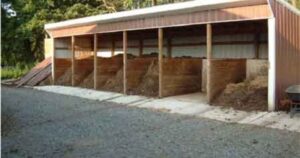
Dealing with Mortality: Incineration Vs. Composting
Of course every farmer wants all of their animals to live to achieve their full and delicious potential, but despite our best efforts sometimes we may end up with some livestock that is not so, well, alive. When faced with mortality in the herd or flock a host of issues come up, not the least…
Read More
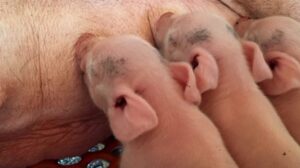
Combating Seasonal Infertility Through Environment
Seasonal infertility – defined in terms of either embryo loss or abortion – is a problem that many producers face every year. But why is this a problem, and how do we limit it? In the early days of hog production, it was normal for sows to only produce one litter per year, farrowing in…
Read More

Swine Ventilation – Choosing a Fan
There are several types of ventilation options that can be used, some more common than others. In the US, where the majority of pig production is done in just a handful of states, all of which suffer cold, blustery winters, negative pressure ventilation is the most common system. In areas where climate is more temperate,…
Read More
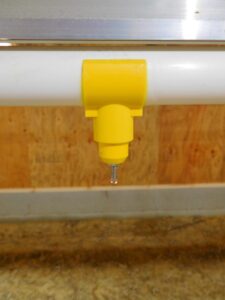
Swabbing Water Lines – A Better Level of Water Awareness
We know that biofilm is a tricky thing. It grows quickly, harbors bacteria, protects that bacteria from cleaning agents, and then releases those bacteria back into the water, potentially causing severe health issues. We clean and sanitize regularly to try to keep it controlled, but how can we know how much bacteria are actually inside…
Read More
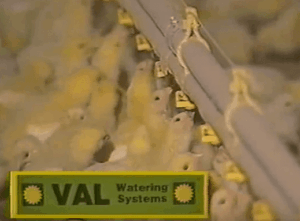
Val Watering – The Original
For almost 40 years, Val Watering has been the industry leader in closed poultry watering systems. Old but gold, this video still speaks to the value, quality, and dependability you've come to trust from VAL-CO. We stand behind our product. We stand behind our customers. We always will. https://youtu.be/oqcJ9-nWa0I
Read More
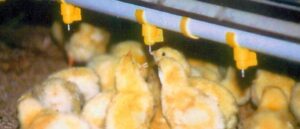
Drinker Sanitation – Would you drink that water?
Water is arguably the most important element to consider when operating a poultry farm. It keeps birds hydrated, it encourages them to eat and is essential for the digestion of what they do eat, and it acts as an administration tool to deliver medications and supplements to keep them healthy. It is the essential solvent…
Read More
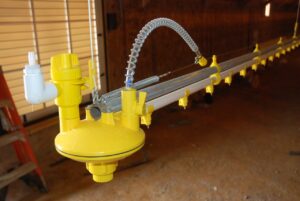
The Water Pressure Sweet Spot
Last week we talked about how important it is to have your drinker line at the proper height to ensure that birds can easily drink without spilling too much water on the floor. Of course this is important, but it’s not the whole picture, so this week we’re going to talk about water pressure. Let’s…
Read More
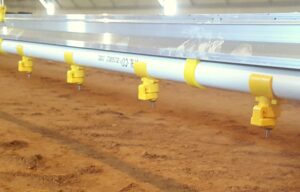
Kennedy family Chicken Farm – BC, Canada
We're happy to be able to be a part of this family farming adventure! https://www.youtube.com/watch?v=gxGbO5b7Tmk&feature=youtu.be
Read More

Drinker Line Height – The Line of Best Fit
Before we get started on why drinker line height is so important, there are a few facts you need to know: One: Chickens consume 1.75 pounds of water for every pound of feed. This is a constant. Two: Chickens have a maximum rate at which they can consume water, and this rate changes with age.…
Read More
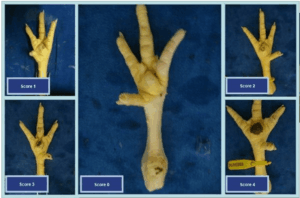
The Dos & Don’ts of Improved Paw Quality
Footpad health is used as an audit criterion in US and Europe during animal welfare audits but it is a lesser concern than some other criterion. This is likely, at least in part, because growers don’t see any immediate financial incentive to improve paw quality. Integrators, however, have an incentive: chicken paws are really profitable…
Read More
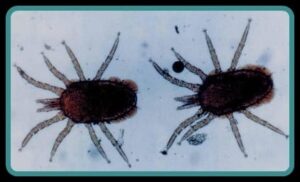
The Mighty Poultry Mites
Mites are small but mighty... mighty destructive. Of all of the pests pestering chickens, mites be the worst offenders. There are several varieties, which we will review below, and they all cause grief in both farmers and chickens alike. They're hard to see and harder to get rid of, so prevention is the best medicine.…
Read More
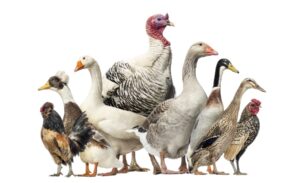
Avian Influenza: What You Should Know
Avian influenza, or bird flu, is carried by wild birds who are immune to its effects. While these wild, often migratory, fowl do not show signs or symptoms of the disease, they do act as carriers and can spread disease quickly over large areas. Domesticated birds - including chickens, ducks, quail, pheasants, and even ostriches - are…
Read More
